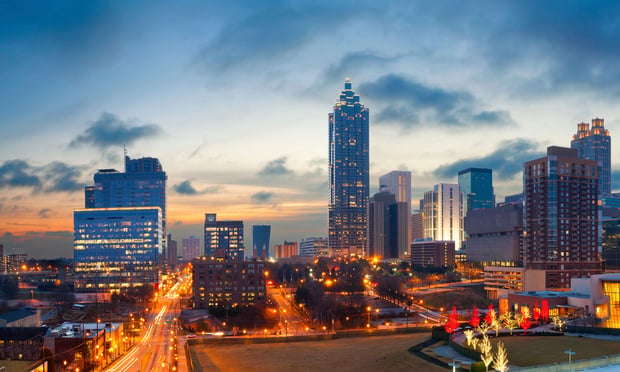
ATLANTA—The retail landscape has morphed rapidly in the past decade with the rise of online shopping. Experiential retail, or retailtainment as some call it, has been one of the only answers to the e-commerce challenge.
The bottom line: In order to draw customers back into their stores, brick and mortar retailers are pulling out the stops with extreme creativity. One of the latest examples is Halcyon, a new mixed-use village in the 400 Corridor of Forsyth County. Halycon developers are working to make sure the village has a strong tenant mix that will attract diverse demographics.
Steve Yenser, executive vice president of retail leasing and development with JLL, tells GlobeSt.com his experience in the 400 Corridor is an example of the evolution of retail. He offered some perspective on retail trends and where we may be heading next.
“In 1993 we worked with North Point Mall, a super-regional enclosed mall that established the viability of retail outside the perimeter,” Yenser says. “The project centered around department store anchors and mass retail. Entertainment was an add on, not a central theme.”
(Are indoor shopping malls going the way of the dinosaur? Here's one perspective.)
Fast forward 15 years and Yenser worked with Avenue Forsyth, now known as Collection, an open-air lifestyle center without traditional department store anchors and a much stronger emphasis on restaurants as a collective anchor. The strategy, he explains, was much more predicated on convenience to the customer versus super-regional draw. In other words, it was more of anti-mall versus mega retail.
Today, Yenser says, mixed-use is a must. Savvy developers are looking to recreate an urban feel in the suburbs with projects that feature entertainment and food tenants as anchors. Live-work-play concepts, he says are required to capture both retailers' and customers' interest in a 21st Century retail market. Showrooming is also a growing trend in retail.
“There is very little large-scale development being done anywhere that doesn't involve mixed uses,” Yenser says. “The days of building sprawling suburban retail-only projects are few and far between.”
As everything is cyclical, Yenser predicts sprawling suburban developments will return at some point in future as Millennials form families and move back to the suburbs. But that seems to be in the distant future.

ATLANTA—The retail landscape has morphed rapidly in the past decade with the rise of online shopping. Experiential retail, or retailtainment as some call it, has been one of the only answers to the e-commerce challenge.
The bottom line: In order to draw customers back into their stores, brick and mortar retailers are pulling out the stops with extreme creativity. One of the latest examples is Halcyon, a new mixed-use village in the 400 Corridor of Forsyth County. Halycon developers are working to make sure the village has a strong tenant mix that will attract diverse demographics.
Steve Yenser, executive vice president of retail leasing and development with JLL, tells GlobeSt.com his experience in the 400 Corridor is an example of the evolution of retail. He offered some perspective on retail trends and where we may be heading next.
“In 1993 we worked with North Point Mall, a super-regional enclosed mall that established the viability of retail outside the perimeter,” Yenser says. “The project centered around department store anchors and mass retail. Entertainment was an add on, not a central theme.”
(Are indoor shopping malls going the way of the dinosaur? Here's one perspective.)
Fast forward 15 years and Yenser worked with Avenue Forsyth, now known as Collection, an open-air lifestyle center without traditional department store anchors and a much stronger emphasis on restaurants as a collective anchor. The strategy, he explains, was much more predicated on convenience to the customer versus super-regional draw. In other words, it was more of anti-mall versus mega retail.
Today, Yenser says, mixed-use is a must. Savvy developers are looking to recreate an urban feel in the suburbs with projects that feature entertainment and food tenants as anchors. Live-work-play concepts, he says are required to capture both retailers' and customers' interest in a 21st Century retail market. Showrooming is also a growing trend in retail.
“There is very little large-scale development being done anywhere that doesn't involve mixed uses,” Yenser says. “The days of building sprawling suburban retail-only projects are few and far between.”
As everything is cyclical, Yenser predicts sprawling suburban developments will return at some point in future as Millennials form families and move back to the suburbs. But that seems to be in the distant future.
Want to continue reading?
Become a Free ALM Digital Reader.
Once you are an ALM Digital Member, you’ll receive:
- Breaking commercial real estate news and analysis, on-site and via our newsletters and custom alerts
- Educational webcasts, white papers, and ebooks from industry thought leaders
- Critical coverage of the property casualty insurance and financial advisory markets on our other ALM sites, PropertyCasualty360 and ThinkAdvisor
Already have an account? Sign In Now
*May exclude premium content© 2025 ALM Global, LLC, All Rights Reserved. Request academic re-use from www.copyright.com. All other uses, submit a request to [email protected]. For more information visit Asset & Logo Licensing.








